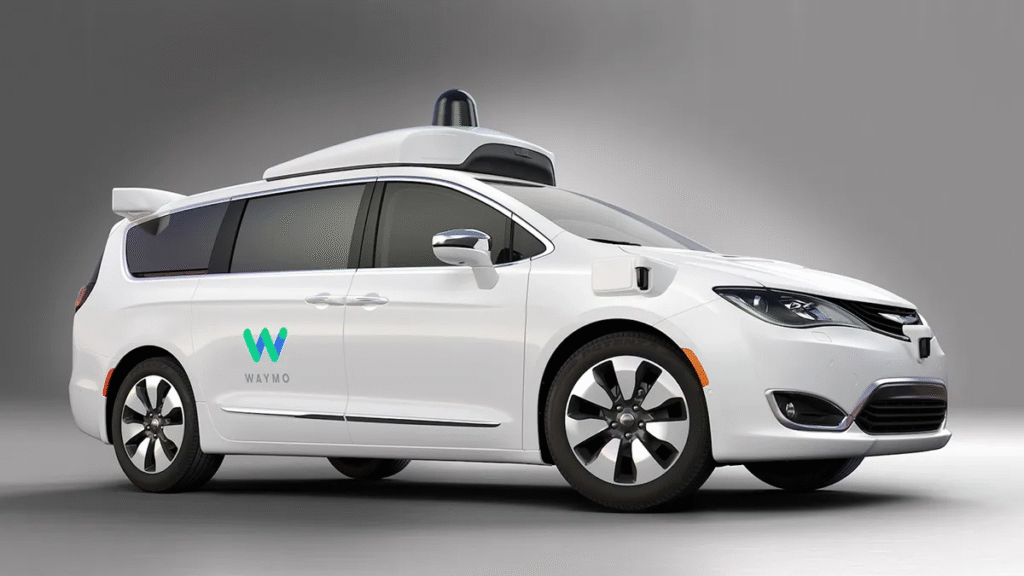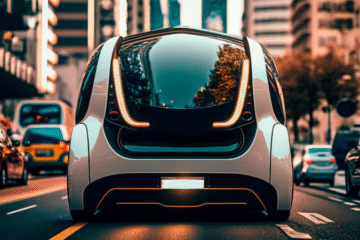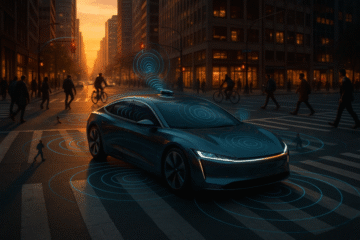
Self-Driving Cars: The Road Ahead

Introduction
The evolution of transportation has always been marked by the introduction of groundbreaking technologies, and self-driving cars, or autonomous vehicles (AVs), are poised to be the next major leap. For years, autonomous driving was the stuff of science fiction, but today, it’s on the verge of transforming how we drive. These vehicles, capable of navigating and driving themselves without human input, are already being tested and used in limited forms. However, as with any new technology, self-driving cars come with their own set of challenges, questions, and opportunities. In this article, we’ll take a look at what self-driving cars are, the current advancements in autonomous technology, and the ethical and legal considerations that need to be addressed as we move towards a future where self-driving cars could become a mainstream reality.
What Are Self-Driving Cars?
At their core, self-driving cars are vehicles that are capable of sensing their environment and operating without human intervention. Unlike traditional cars, which require the driver to control steering, acceleration, and braking, autonomous vehicles use a combination of sensors, cameras, and advanced algorithms to make real-time decisions while on the road.
The essential components of a self-driving car include:
- Sensors: These help the vehicle understand its surroundings. This includes Lidar (Light Detection and Ranging) for creating 3D maps, radar for detecting objects at long distances, and cameras for identifying road signs, traffic lights, and obstacles.
- Software and AI: Autonomous vehicles rely heavily on artificial intelligence (AI) and machine learning to process the data from these sensors and make decisions. The AI helps the car “learn” from every trip, becoming better at handling a variety of driving conditions.
- Mapping and GPS: Autonomous cars use highly detailed maps to navigate their surroundings accurately, while GPS provides location data to help the car understand where it is and where it needs to go.
Self-driving cars operate on a scale of autonomy, ranging from Level 1 (basic driver assistance) to Level 5 (full autonomy). At Level 5, the car can operate entirely without human intervention in any environment, making decisions that are typically reserved for human drivers.
Current Advancements in Autonomous Technology
Self-driving technology has come a long way over the past decade, thanks to advances in artificial intelligence, machine learning, and sensor technology. While we’re still not at the stage where fully autonomous vehicles are commonplace, there have been significant strides toward their development.
1. Tesla’s Autopilot and Full Self-Driving (FSD)
Tesla has been a key player in the self-driving revolution, with its Autopilot system and Full Self-Driving (FSD) package. Autopilot allows the car to assist with steering, braking, and lane-keeping, while the FSD feature offers advanced capabilities, such as automated lane changes, navigation on highways, and the ability to park the car without driver input. Tesla continues to enhance these features through over-the-air software updates, getting closer to fully autonomous driving. However, Tesla vehicles still require the driver to remain alert and ready to take control when needed.

2. Waymo – The Industry Leader in Full Autonomy
Waymo, a subsidiary of Alphabet (Google’s parent company), is often considered the leader in the autonomous vehicle space. Unlike Tesla, Waymo has deployed fully autonomous vehicles (Level 4) in specific areas, such as parts of Phoenix, Arizona. Waymo’s vehicles can navigate without any human intervention, but they are currently restricted to geofenced areas, meaning they can only operate in certain, pre-mapped zones. Waymo’s fleet of minivans and electric vehicles is equipped with Lidar, radar, and cameras to ensure safe and efficient driving.

3. Cruise and General Motors
General Motors (GM) is also making significant strides in the autonomous vehicle space with its subsidiary, Cruise. Cruise is testing autonomous vehicles in urban environments like San Francisco, with the goal of launching a fully driverless ride-hailing service. GM plans to introduce fully autonomous vehicles (Level 4) by 2025. Cruise’s vehicles are equipped with advanced sensors and AI to navigate complex city streets, making them a major competitor in the race for autonomous ride-hailing services.
4. Rivian – The Electric Adventurer
Rivian, an electric vehicle startup, is gaining attention for its rugged electric trucks and SUVs, including the R1T pickup and the R1S SUV. Rivian’s vehicles are designed with off-roading in mind and are equipped with advanced autonomous driving features. While Rivian’s primary focus is on electric performance, the company is also investing in autonomous driving technology to make its vehicles smarter and safer. Rivian’s emphasis on autonomous features aligns with the growing demand for electric, self-driving vehicles that are capable of navigating both urban environments and rough terrain.
5. Other Manufacturers and the Race to Autonomy
It’s not just Tesla, Waymo, and Cruise leading the charge. Major automakers such as Ford, Volkswagen, and BMW are all investing heavily in autonomous vehicle technology. Ford’s Argo AI and BMW’s iNext are both focused on creating autonomous driving systems that will integrate seamlessly with their existing fleets. As these companies continue to develop and test their technologies, we are getting closer to a future where self-driving cars are no longer a novelty but a norm.
Ethical and Legal Considerations
While the technology for self-driving cars is advancing rapidly, there are numerous ethical and legal issues that need to be addressed as we move toward widespread adoption. These include questions of responsibility, decision-making in critical situations, and the broader societal impact of autonomous vehicles.
1. Liability and Accountability
When accidents occur involving self-driving cars, who is at fault? Is it the vehicle owner, the manufacturer, or the software developer? In traditional vehicles, the driver is responsible for controlling the car and avoiding accidents. But with autonomous cars, the question of liability becomes much more complex. If an autonomous vehicle causes a crash, determining who is legally responsible for the incident—whether it’s the automaker, the software provider, or the vehicle owner—requires clear legal frameworks.
2. The Ethics of Decision-Making
Autonomous cars must be able to make real-time decisions when faced with situations that are typically resolved by human judgment. For example, if an accident is unavoidable, should the car prioritize the safety of its occupants or the safety of pedestrians? These ethical dilemmas raise critical questions about how autonomous vehicles should act in emergency situations. Should the decision-making process be programmed into the car, or should it be left to human intervention? These are the types of questions that ethicists, engineers, and lawmakers will need to grapple with in the coming years.
3. Privacy Concerns
Self-driving cars generate an enormous amount of data to function. They rely on cameras, GPS, radar, and sensors to understand their environment and make decisions. As these cars become more integrated into daily life, concerns about data privacy will grow. Who owns the data collected by self-driving cars? How will it be protected? Will this data be used for purposes beyond improving vehicle performance? These questions must be addressed to ensure that the deployment of self-driving cars does not lead to the invasion of personal privacy.
4. Employment and Social Impact
The widespread adoption of self-driving cars is expected to have a major impact on jobs, particularly in sectors like trucking, delivery, and taxi services. Millions of drivers currently depend on these jobs to make a living, and as autonomous vehicles replace human drivers, the workforce will need to adapt. Policymakers must find ways to transition workers into new roles, ensuring that the shift to self-driving technology doesn’t disproportionately affect vulnerable job sectors.
5. Regulatory and Safety Standards
As autonomous vehicles hit the roads, there is a need for standardized regulations that ensure safety and fairness. Different countries and regions will need to develop consistent rules for testing, deploying, and managing self-driving cars. Without global standards, the integration of autonomous vehicles into daily life could face delays and roadblocks. Governments will need to create frameworks that guarantee the safe operation of self-driving cars while fostering innovation.
Conclusion
Self-driving cars represent a new era in the world of transportation, one that promises to make driving safer, more efficient, and more sustainable. Companies like Waymo, Tesla, and Cruise are already leading the charge, developing autonomous technologies that could eventually transform how we get from point A to point B. However, challenges remain, especially in the areas of regulation, ethics, and the legal implications of self-driving technology. As we move forward, it will be essential for technology developers, lawmakers, and consumers to work together to address these concerns and create a future where autonomous vehicles can thrive in a safe, ethical, and efficient manner.










